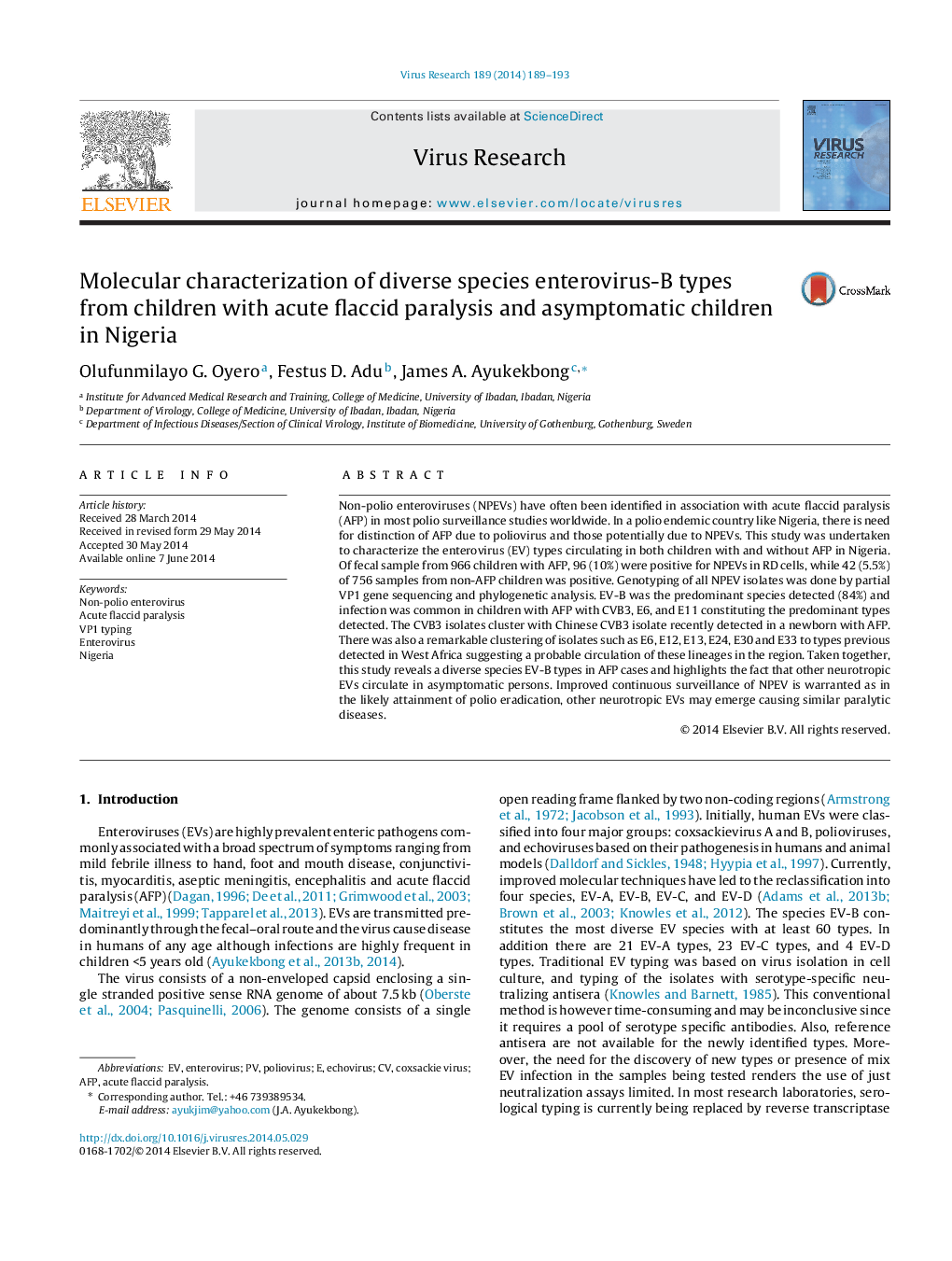| Article ID | Journal | Published Year | Pages | File Type |
|---|---|---|---|---|
| 6142506 | Virus Research | 2014 | 5 Pages |
•High prevalence and diversity of species enterovirus_B in acute flaccid paralysis children in Nigeria.•Probable circulation of lineages of E6, E12, E13, E24, E30 and E33 in Nigeria and neighboring countries.•Asymptomatic excretion of diversed enteroviruses in the population.
Non-polio enteroviruses (NPEVs) have often been identified in association with acute flaccid paralysis (AFP) in most polio surveillance studies worldwide. In a polio endemic country like Nigeria, there is need for distinction of AFP due to poliovirus and those potentially due to NPEVs. This study was undertaken to characterize the enterovirus (EV) types circulating in both children with and without AFP in Nigeria. Of fecal sample from 966 children with AFP, 96 (10%) were positive for NPEVs in RD cells, while 42 (5.5%) of 756 samples from non-AFP children was positive. Genotyping of all NPEV isolates was done by partial VP1 gene sequencing and phylogenetic analysis. EV-B was the predominant species detected (84%) and infection was common in children with AFP with CVB3, E6, and E11 constituting the predominant types detected. The CVB3 isolates cluster with Chinese CVB3 isolate recently detected in a newborn with AFP. There was also a remarkable clustering of isolates such as E6, E12, E13, E24, E30 and E33 to types previous detected in West Africa suggesting a probable circulation of these lineages in the region. Taken together, this study reveals a diverse species EV-B types in AFP cases and highlights the fact that other neurotropic EVs circulate in asymptomatic persons. Improved continuous surveillance of NPEV is warranted as in the likely attainment of polio eradication, other neurotropic EVs may emerge causing similar paralytic diseases.
